With the help of sequins, you can make spectacular decorations for festive outfits or modest ones for everyday casual clothes. These sparkles are available in various types and colors. Creating patterns requires work, but the result will be worth it. Before you get down to business, you need to figure out how to sew on sequins correctly.
- What are sequins
- What types of sequins are there?
- Sewing Features
- Materials and tools you will need for sequin embroidery
- Sewing Sequins Step by Step Methods
- Sew on sequins with a closed stitch
- Continuous seam
- Blind stitch
- Decorative row with back stitch
- Sequin embroidery "fish scales"
- How to sew sequins by hand
What are sequins
Translated from French, "sequins" means "golden grains of sand." In ancient times, they were made of precious metals, as a result, their use cost a significant amount. Attempts were made to create cheap analogues from gelatin. However, it was almost impossible to use such sequins. In a warm room, this material began to melt, which spoiled the appearance of fashionistas.
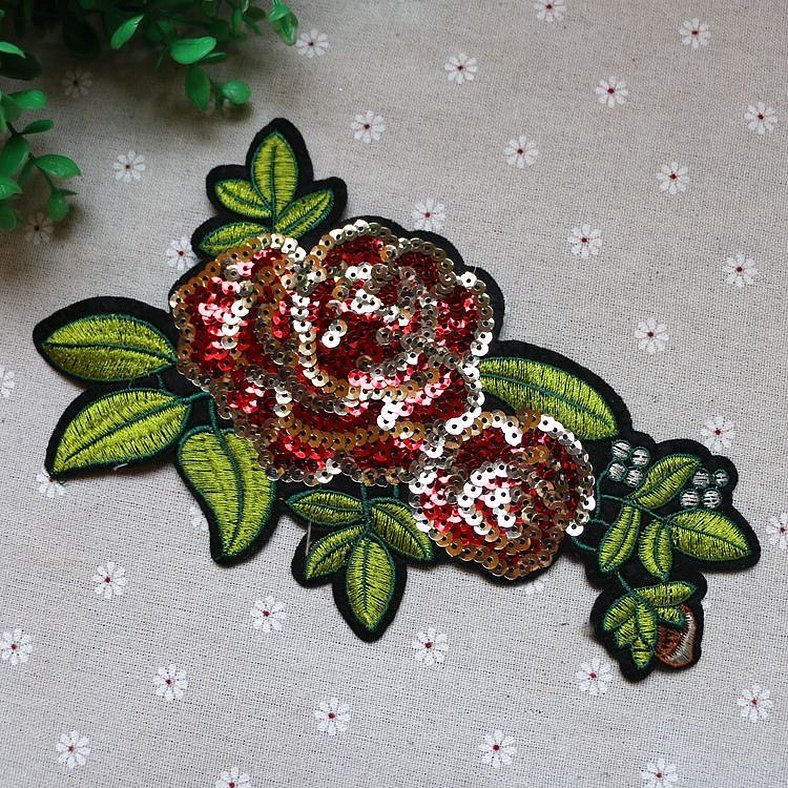
At the end of the 19th century, plastic was invented. Celluloid sequins came into use. The popularity of this type of jewelry has not decreased to this day.
Today, these small shiny details are made of metallized paper or plastic. Sequins are sewn on through a small hole in the middle. They can be sewn onto a woven or knitted base.
You can connect glitter not only with threads and needles, but also crochet a pattern.
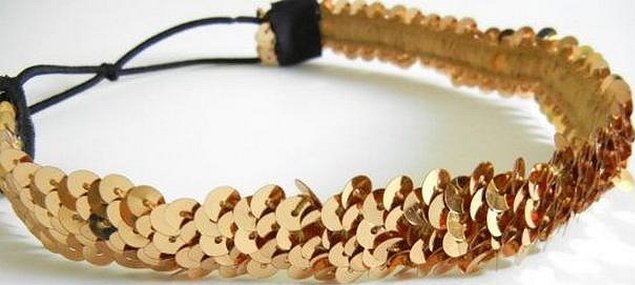
This material has gained popularity due to the following advantages:
- Variety of colors and shapes.
- Low price and wide availability.
- Learning how to sew on sequins is not difficult. To do it well, you don’t need any additional equipment.
- Sequins are lightweight. They hardly weigh down clothes even when using large patterns.
- Sequins can be used both separately and in combination with various decorative elements, for example, on clothing, felt hats, and as accessories.
- These decorations have great pictorial possibilities. With their help, you can create complex pictures or compositions.
- The use of sequins has remained a fashion trend for many years.
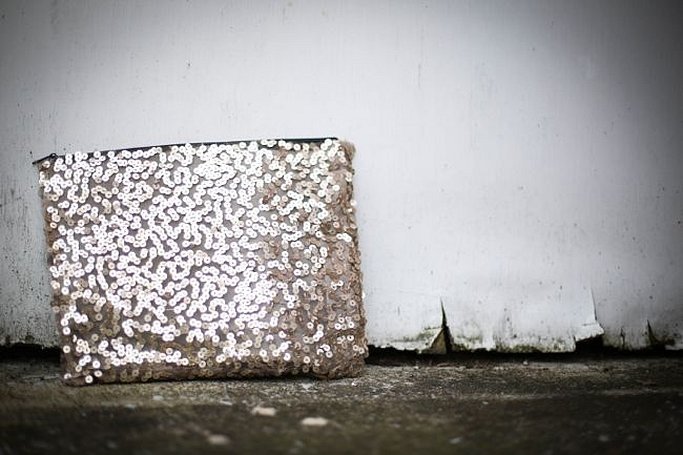
Please note! This decorative material is used to create brooches, improve the appearance of shoes, handbags, home decor items, various accessories, etc.
Before you sew sequins onto fabric by hand, you need to learn how to do it correctly.
What types of sequins are there?
Most often, sequins are round, but square, oval, star-shaped or other shapes can also be used, there are those with a flat surface, concave or convex, as well as those with holographic properties.
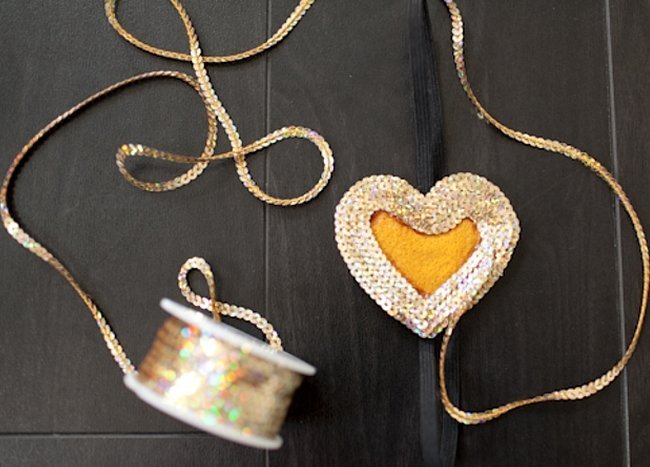
Sewing Features
To create durable and beautiful patterns, the following features of sequins must be taken into account during work:
- The details must be securely attached to clothing or a hat. It is important to remember that when worn, they will be subject to mechanical impacts and must withstand them. They must not only hold well, but also not move from their place and cannot turn over. There is a special type of moving glitter designed to achieve a special effect.
- Usually several sequins are attached to one thread. The attachment of the ends of this thread should be especially secure.
- The warp thread should not sag. The tension creates the necessary arrangement of the pattern details. At the same time, you need to ensure that the material does not tighten.
- The use of glitter will decorate an evening dress. On a casual outfit, a luxurious pattern may look out of place.
- Matte sequins will look better on outerwear.
- High temperatures will have a destructive effect on glitter. Therefore, the fabric should be ironed before the sequin pattern is made on it. Subsequent ironing can only be done using a fairly low temperature and various precautions.
A beautiful pattern made with shiny decorative details will effectively decorate the fabric if you keep its features in mind when creating it.
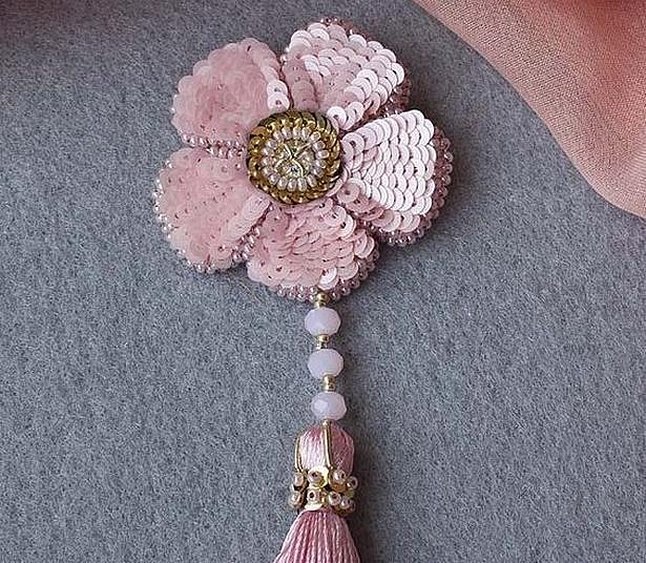
Materials and tools you will need for sequin embroidery
To start embroidering patterns from them, you will need the sequins themselves, needles and threads. Sometimes a pattern may involve the use of several decorative materials, such as beads or rhinestones. Large needles are often used. This is necessary so that they can easily pierce the material when working on creating jewelry.
Since the main element of the composition is sequins, the threads should not stand out with their color, they are chosen to match the color of the fabric. It is important that they represent a strong base for the pattern. If the threads tend to fluff up, they need to be waxed.
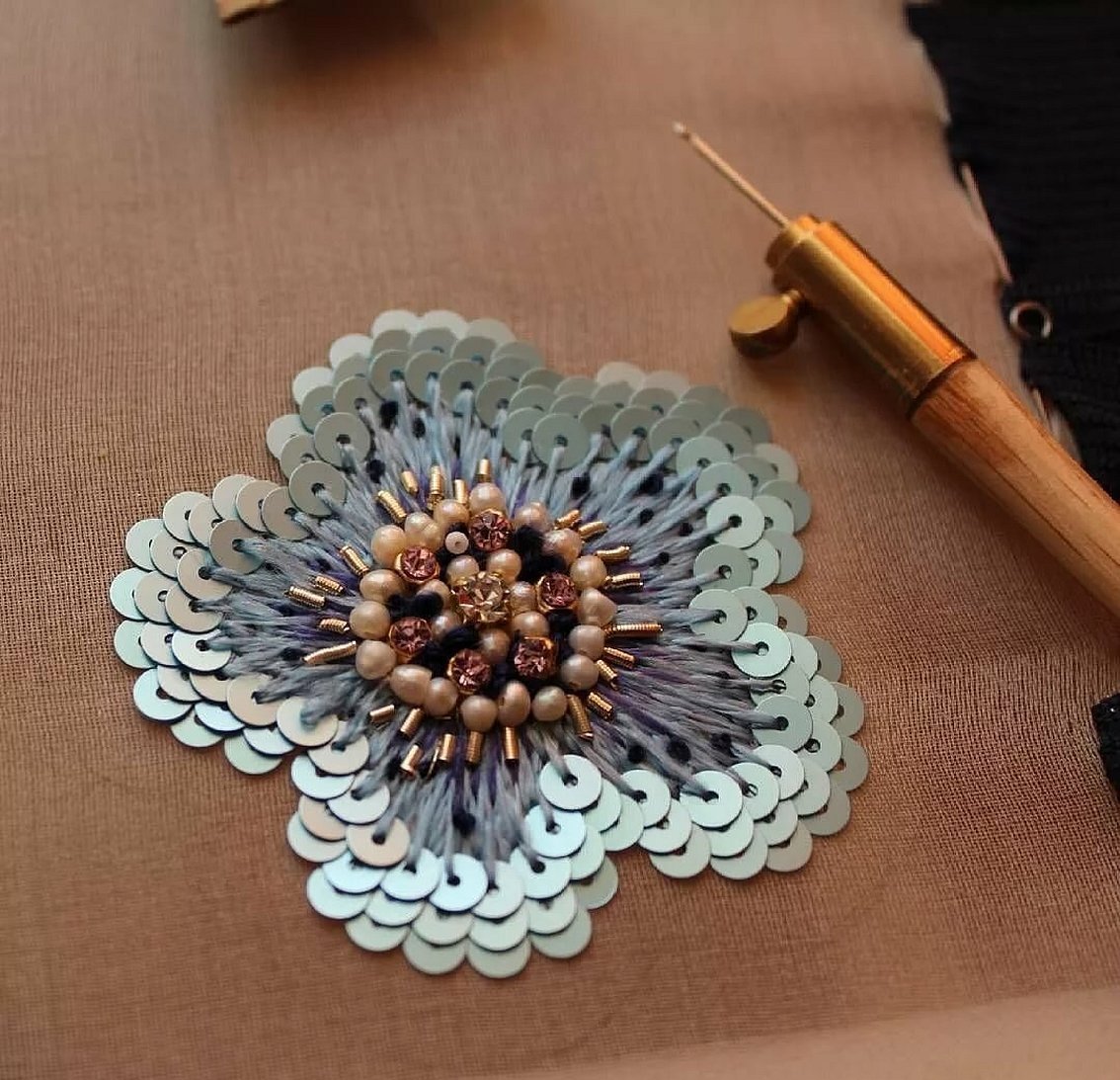
When creating a composition, it is convenient to use a stretcher. Thanks to this device, you can keep the fabric base taut while doing manual work. In the process, you may need scissors, it is better to choose the smallest ones, for example, manicure scissors.
Sewing Sequins Step by Step Methods
To make beautiful and durable patterns from glitter, you need to understand how to sew them on correctly, take a master class. There are several options for this, each of which can be used to create beautiful decorations.

Sew on sequins with a closed stitch
You can hide the thread when creating a pattern using small beads. To do this, do the following:
- The sequins are attached side by side: edge to edge. First, the needle passes through the base fabric in the place where the middle of the next piece will be.
- Then the sewing needle is passed through a bead, seed bead or something similar.
- After this, it passes through the same hole in the middle of the part.
- The needle is then brought out through the base fabric from the bottom up in the place where the next sequin will be located.
Important! The combined use of two decorative means not only hides the thread, but can also serve as an additional means of expression.
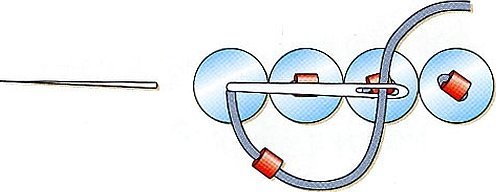
Continuous seam
This is another way to sew on sequins. When using a continuous seam, the threads remain visible. Therefore, when choosing them, you need to pay attention to the color and choose it so that it does not stand out. An important advantage of this option is its higher strength and reliability. It is recommended to make this seam in the direction from right to left. Such actions are performed as follows:
- The needle is inserted from the bottom up where the center of the next piece should be. The sequins are laid out so that their edges touch.
- The first stitch is made towards the far edge of the piece. Then the needle goes up through the center again from the bottom.
- The second time the stitch goes towards the near edge of the new sequin. The needle pierces the fabric from top to bottom at the very edge.
- Then the thread goes down to where the middle of the next piece will be and here it goes through the fabric to the top.
This method of attaching sequins is reliable. The combination of threads and sequins can be used by the master to create the desired image.
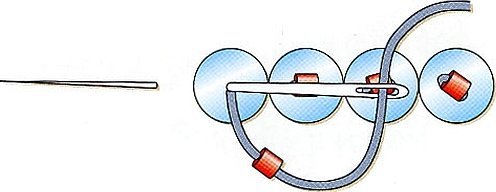
Blind stitch
This stitch is made in such a way that each subsequent sequin half covers the previous one. They are usually sewn from right to left. To make blind stitches, you need to do the following:
- A needle puncture is made from the bottom up at the left edge of the new piece. It is placed at such a distance that it covers half of the sequin on which the stitch is visible.
- The needle is then threaded up and down through the middle of the new sequin.
- The needle is then brought through the fabric from the bottom up to begin working on a new sequin.
With this type of stitching, the threads or fishing line are completely invisible. This feature can be used to create visual effects.
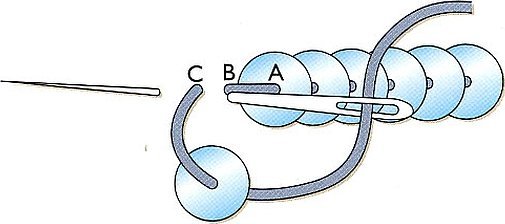
Decorative row with back stitch
When working in this way, the seam is created as follows:
- The fabric is pierced from the bottom side and a sequin is strung onto it.
- Then the thread with the needle is brought up and passed back.
- A puncture is made in the fabric at the edge of the sequin.
- Then move on to sewing the next sequin next to the opposite edge.
Thus, with this seam, the seam on the back half of the sequin is visible on each sequin.
Sequin embroidery "fish scales"
When using this style, some of the sequins are hidden by others. In this case, you can partially hide the threads with which the embroidery was done. This method of decoration got its name because it resembles scales in appearance.
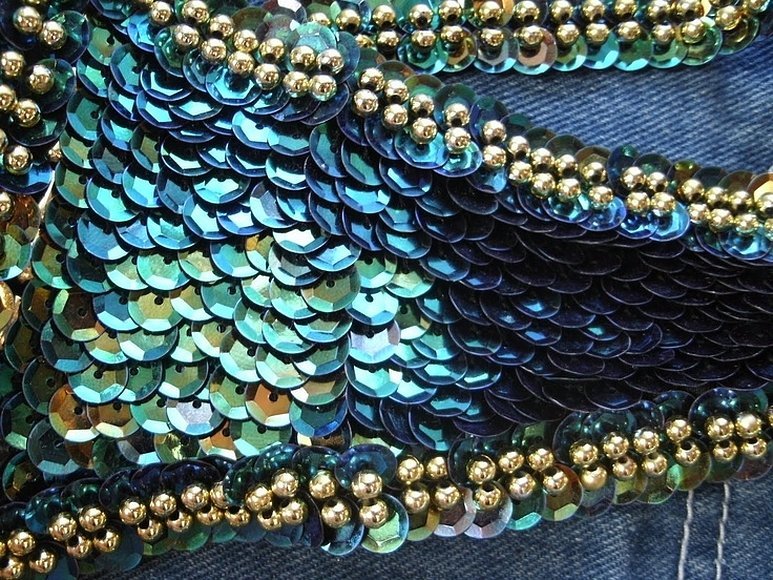
When using it, each subsequent sequin half covers the previous one, hiding the stitch. To sew them on, you need to do the following:
- The new sequin is placed so that it half covers the previous one, and the needle is brought out from the bottom up so that it passes through the far edge of the piece.
- Then make a stitch, directing the needle down into the center of the sequin.
- After this, the needle is passed from the bottom to the point where the far edge of the new sequin will be located.
This coating completely hides the stitches used to attach the glitter.
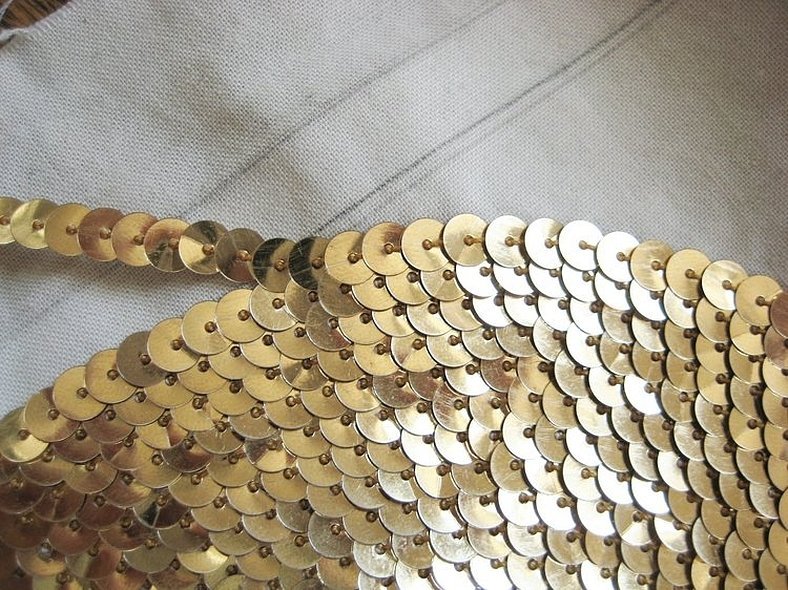
How to sew sequins by hand
It is convenient to use lavsan thread for working with glitter. It is preferable to use a long needle. Its thickness should be such that it is convenient to work with the fabric. If it is thin, then it is recommended to use a thin needle. For a coarse one, a more powerful one will be required. Although you can do the work on a sewing machine, but manual work is sometimes more attractive for the master.
Important! Once the pattern is created, it is recommended to lightly run your hand over it. If the sequins are sewn on well, they will not move.
If you steam or iron glitter patterns, they may lose their appearance. They should be cared for with great care.
You can sew decorations not only onto clothes, but also onto a beautiful ribbon.
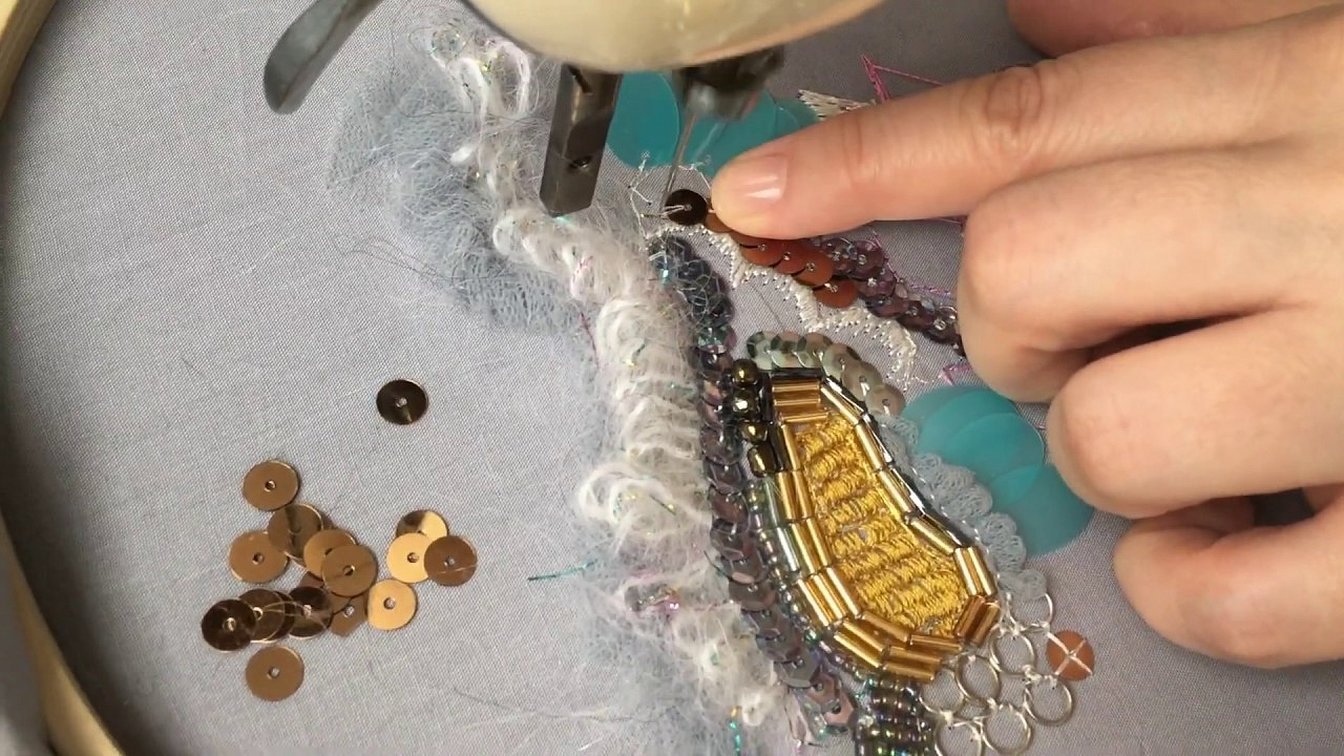
The use of sequins allows you to create bright and festive patterns, as well as decorations that will look beautiful on ordinary everyday clothes. The variety of types of sequins and techniques for working with them gives scope for the creative imagination of the master.




